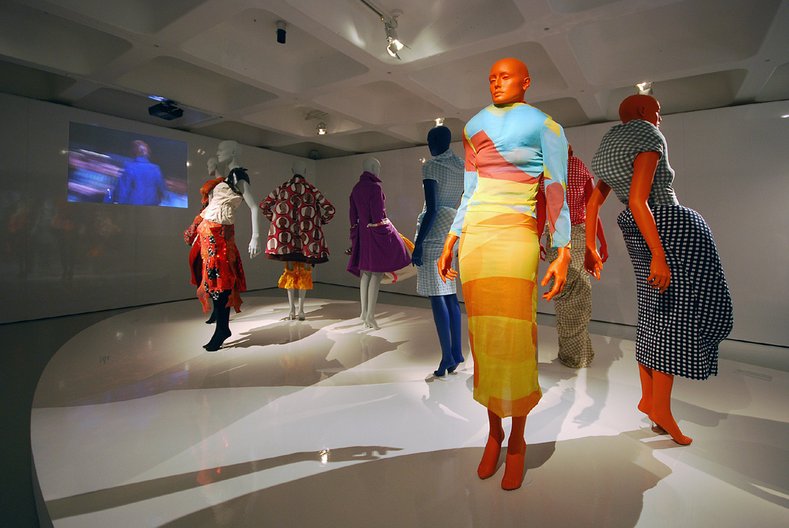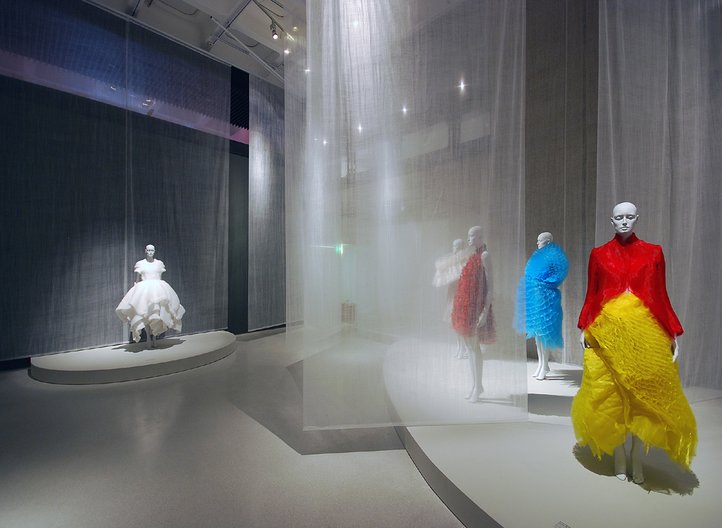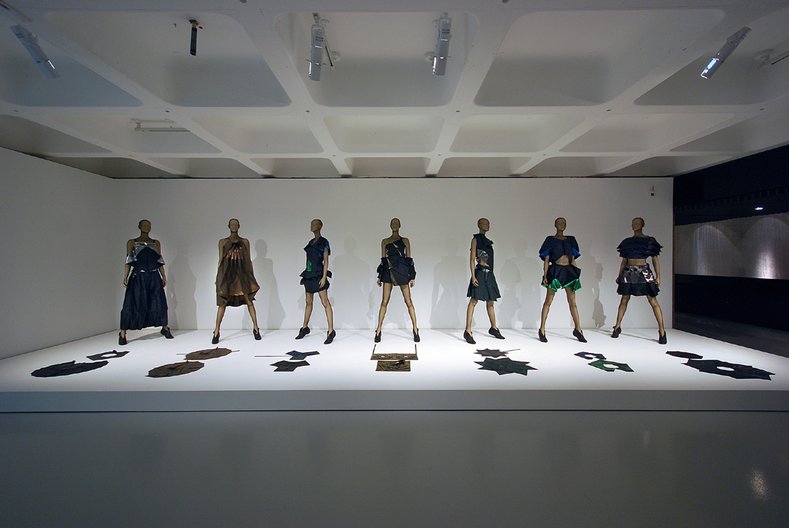16 January 2011
by Vicky Richardson
The following review appears in February 2011 issue of Blueprint Magazine.
Japanese fashion is always so richly of its time, so fiercely imaginative and original that even if you only wear it once, it’s an investment never to be regretted. After seeing Issey Miyake’s exhibition Making Things at the Fondation Cartier in Paris in 1998, I craved a piece of APOC (A Piece Of Cloth) – wearing it felt like being part of an experiment to reinvent the way we dress, and the way things are made. But if they are constantly innovating, Japanese fashion designers also seem to follow their own rules, a self-determined logic, refreshingly oblivious to the dictat of trend, with its rules about colour, shape and hemlines. This is reflected in the Barbican’s show. Garments created decades apart are being exhibited alongside each other without the passage of time being at all apparent.
Future Beauty has been much anticipated. With garments from the Kyoto Costume Institute, and an exhibition design by the inventive Tokyo-based architect Sou Fujimoto, it could only be a treat in the making. The show is broken into two main approaches, following the double-level structure of the Barbican Art Gallery.
Upon entering, the route follows a path through different themes while upstairs, the eight alcoves profile seven leading designers plus the ‘next generation’. A sense of time is entirely absent, apart from as an identifier in captions, as if the curators consciously rejected the idea that collections might have been generated in response to events in the outside world, or even in the world of fashion.
The rejection of chronology is refreshing in the context of fashion, which is so dominated by seasons, but also frustrating.
In the section devoted to Issey Miyake, we see the designer’s latest incredible experiments in flat geometric shapes that transform into remarkable garments (the 132 5 project) – the first time this long awaited collection has been unveiled in the UK. The curators give this new work equal weight to ‘old’ collections by Rei Kawakubo and the other leading designers. Yet I can’t help feeling disappointed at the lack of recognition for ‘the new’ which, like it or not, is still a key driver in fashion.
Of course, it is thrilling to see many of the garments in the flesh, having seen them in magazines over the years. Commes des Garcons’ wedding skirt made from kraft paper seems as fresh as when it appeared in i-D magazine in 2007. The exhibition’s brief descriptive captions often refer to the inventive use of unconventional materials, for example Junya Watanabe’s garments made from industrial and functional materials such as interlining. It’s enjoyable to see less familiar pieces, such as Kosuke Tsumura’s Final Home (1994), a white net coat stuffed with scrunched newspaper.
The themes, however, are inconsistent (veering from such literary reference as ‘In Praise of Shadows’ to blunt description) and left me wanting more. The most successful is ‘Flatness’, which features the extraordinary photographs of Rei Kawakubo’s work taken by Naoya Hatakeyama in 2009. Laying out garments in the series, Hatakeyama draws out the geometric structure in each: when laid flat on the floor the clothes have the character of geometric shapes and only when wrapped around the human body do they take on dynamic sculptural forms. These photographs are a highlight of the exhibition, although they suggest an alternative theme, which is barely explored – that of process. Most Japanese fashion explores process of some sort, whether in the overt form of Issey Miyake’s APOC or with Yohji Yamamoto’s subverted tailoring. Yet the exhibition steers away from the technical, drawing a veil over the making, experimenting and research that lies behind the work.
This is described as a comprehensive survey show, and there is no doubt that the Kyoto Costume Institute has a remarkable collection. However it is primarily a show for existing fans of Japanese fashion, and barely scratches the surface of the careers of Japan’s leading designers, while providing the briefest glimpse into important influences such as street style in the section dubbed ‘Cool Japan’.
Many of the themes are further explored in the exhibition’s fantastic events programme, and the catalogue published by Merrell contains much more detail as well as a series of excellent essays. On the upper level of the gallery, alcoves devoted to the key designers are a chance to look at each in greater depth, yet the size of each space cannot possibly do them justice.
The inclusion of such less well known designers as Hokuto Katsui and Yao Nagi of Mintdesigns, is interesting but it serves to reinforce how Japanese fashion continues to be dominated by a small group.
Next month’s exhibition on Yohji Yamamoto (at the V&A from March), it will be a good follow up to Future Beauty. And for diehard fans of Japanese fashion, there’s always the January sale at Dover Street Market.
Future Beauty: 30 Years of Japanese Fashion runs at Barbican Art Gallery until February 6th 2011, catch it quickly!


